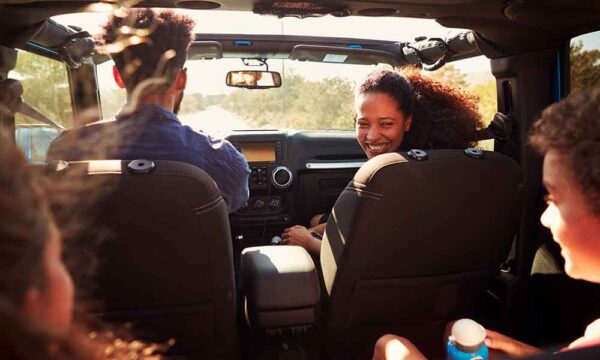
It’s a topic that has inspired America for the past two centuries. Even our country’s greatest poets are eloquent on the subject.
Robert Louis Stevenson wrote “I travel not to go anywhere, but to go. I travel for travel’s sake. The great affair is to move.”
Walt Whitman agreed, “I take to the open road, healthy, free, the world before me.”
And of course, the quintessential American road tripper Jack Kerouac had plenty to say on the subject. His most simple observation: “The road is life.”
The American road trip is the stuff of legends, and though it’s been taken by just about every family in every generation at some time or another, it never seems to fade into cliché. There is something in the American psyche that longs to get out on the highway and explore.
Naturally, summertime is the optimal moment to undertake these epic highway journeys.
Here is our guide to help you get started planning your own:
Safety Preparation
- Make sure to cover the basics before you leave town: have jumper cables, emergency flares, a flashlight and a First Aid kit stashed within easy reach.
- Learning how to do basic vehicle maintenance tasks (like checking oil and tire pressure, jump starting an engine, or changing a flat) is a given. But it’s also a good idea to learn how to at least identify other common problems that can happen to vehicles during high-mileage trips. By knowing the difference between a corroded battery or a misfiring spark plug, a dead alternator or a leaky radiator, you’ll save yourself a lot of worry if something goes wrong, and you won’t be completely at the mercy of a strange mechanic.
- Develop savvy traveler habits. When you stop to get out of the car, don’t leave a road map or travel brochure in plain view on the seat, and use a blanket or coats to cover up your luggage. For nighttime rest stops, opt for big, well-lit areas. Truck stops may sound sketchy, but most of them are patrolled by 24-hour security.
Packing
Depending on where you’re headed and who is traveling with you, you’ll need to be strategic about what you pack.
- If you’re headed for the desert, don’t just take bottles of water—pack a 10-gallon container with a spout. If you get stranded by a flat tire or lost on a lonely highway, you’ll never be so glad to have left other things behind in order to fit that extra H2O in the trunk.
- Most people know to bring several layers of clothing for road trips into the mountains. But the changing weather at high altitudes can also affect your vehicle. Veteran road trippers advise packing a small folding shovel that can help dig your tires out from mud or snow.
- If you’re going to be crossing through farm country, bring a tabletop grill or camp stove. One of the best aspects of summertime is the wealth of farm stands along the road. Buying and cooking your own meals is not only fun, but it saves a lot on eating out.
Other general necessities, no matter where you’re going:
- A GPS (smartphones can’t always be relied upon, when it comes to the open road)
- Toilet paper (don’t ask—just take it)
- Pain relievers and a first aid kit (nothing takes the thrill out of travel like pain that you can’t do anything about)
- A power inverter (to charge electronic devices from the car cigarette lighter)
- Sunscreen (you’d be surprised how red you can get after a day under the windshield)
- Disposable wipes (road trips have a tendency to get clean cars dirty)
Classic Itineraries
The best road trips follow a general itinerary. Whether it’s traveling the length of a legendary highway or just getting to grandmother’s house and back, having a general direction or region in mind will enhance the experience by putting your travels in context. VisitTheUsa.com is a great place to get itineraries and tips for regionally focused road trips.
Another idea is to have a theme to guide your travels. National parks or historic sites are a perennial favorite, but other ideas are to plan your itinerary around musical performances, sports events, county fairs or local holidays.
Other intriguing American road trip itineraries include:
The Skyline Drive: An undulating journey through misty gaps and over cresting overlooks, this drive takes you through the heart of the Shenandoah National Park.
The Pacific Coast Highway: A two-lane ribbon of road that follows California’s craggy coast for 147 miles, this drive is breathtaking both for its ocean views and its hairpin turns.
Dinosaur Diamond Prehistoric Highway: Follow the footprints of prehistoric monsters through the unearthly landscape of western Utah and Colorado.
The Vermont Cheese Trail: The state best known for its maple syrup boasts an impressive number of award-winning cheesemakers, many of whom practice their trade (and offer tours of their operations) along Route 100.
The Florida Keys: Prepare for sensory overload as you explore the hidden lagoons and lush vegetation that rim the Overseas Highway from the mainland to Key West.
Wherever the road takes you this year, make sure you are well-prepared for any roadblocks. Fried Goldberg has been handling motor vehicle accidents for decades. When you need an attorney, you can rely on our firm for help.
